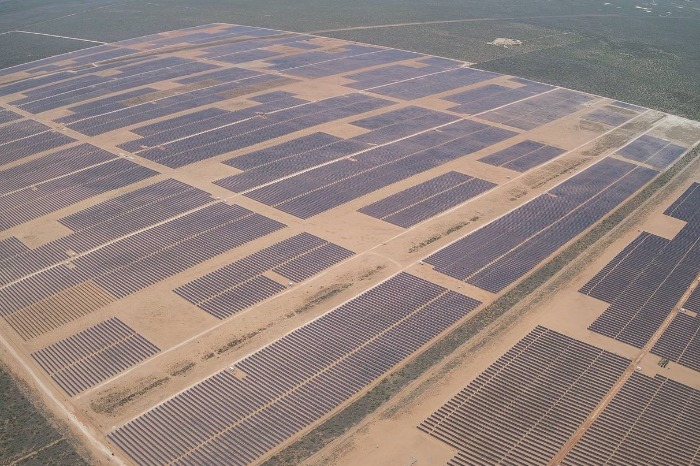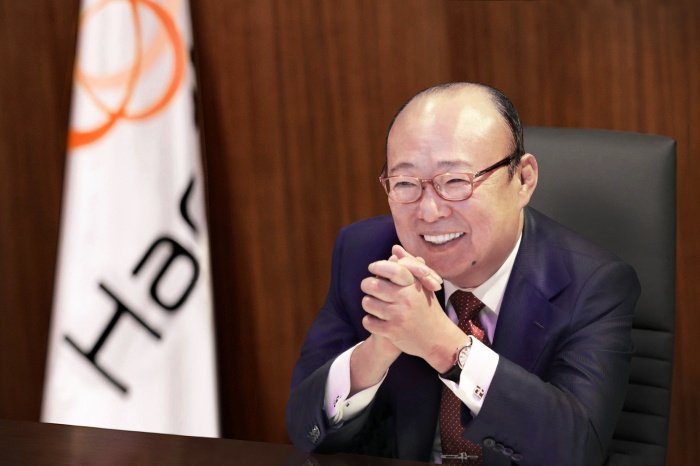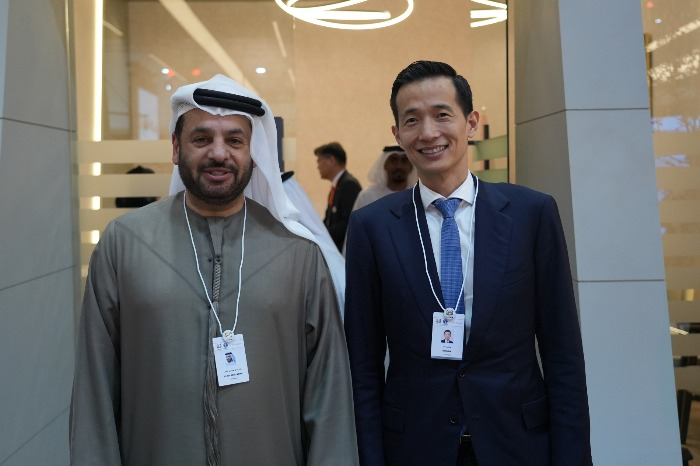Hanwha Energy begins IPO process, key to 3rd-generation shift
The IPO is expected to pave the way for the energy arm's merger with the group's de facto holding firm, sources say
By Mar 11, 2025 (Gmt+09:00)
LG Chem to sell water filter business to Glenwood PE for $692 million


KT&G eyes overseas M&A after rejecting activist fund's offer


Mirae Asset to be named Korea Post’s core real estate fund operator


StockX in merger talks with Naver’s online reseller Kream


Meritz backs half of ex-manager’s $210 mn hedge fund



Hanwha Energy Corp., wholly owned by Hanwha Group Chairman Kim Seung-youn’s three sons, has embarked on the process of going public – a move expected to accelerate the group’s transition to its third-generation leadership, according to investment sources on Tuesday.
Hanwha Energy recently requested proposals for its initial public offering from domestic brokerage companies to pick lead managers, said the sources. The invited firms are expected to submit proposals as early as this week.
Hanwha Energy, an electricity retail and solar energy company, is expected to play a key role in the chemicals-to-defense conglomerate’s succession plans.
It is the second-largest shareholder of the group’s de facto holding company Hanwha Corp., which in turn is a key shareholder of the group's major businesses focused on three pillars – defense, financial and retail.

Each of Chairman Kim Seung-youn’s three sons oversees one of the group's three business sectors.
To facilitate the power transition to the sons, the likely scenario is that Hanwha Energy merges with the holding company, after which the merged entity is divided into three separate business arms: defense, financial and retail.
| Ownership structure of Hanwha Corp. (%) | |
| Group Chairman Kim Seung-youn | 22.65 |
| Hanwha Energy | 22.16 |
| Kim Dong-kwan (first son) | 5.43 |
| Kim Dong-won (second son) | 2.14 |
| Kim Dong-seon (third son) | 2.17 |
| (As of the end of December 2024) | |
Hanwha Energy and its shareholders – the three sons – are expected to use the proceeds from the IPO to bump up their shares in Hanwha Corp., according to market insiders.
"Since Hanwha Energy is unlisted, determining the merger ratio with Hanwha (Corp.) is not easy. But going public could eliminate this uncertainty,” said an investment banking industry official.
"But the succession strategy through Hanwha Energy could face challenges due to the dilution of the three brothers' stake," he added.

Hanwha Group Vice Chairman and heir apparent Kim Dong-kwan controls half of Hanwha Energy. The remaining 50% is evenly split between his two younger brothers: Kim Dong-won, CEO of Hanwha Life Insurance and Kim Dong-seon, vice president of department store operator Hanwha Galleria.
| Hanwha Corp.’s major subsidiaries (%) | |
| Hanwha Aerospace Co. | 33.95 |
| Hanwha Life Insurance Co | 43.24 |
| Hanwha Galleria Corp | 36.31 |
| Hanwha Solutions Corp | 36.31 |
| Hanwha Hotels & Resorts Co. | 49.8 |
| (As of the end of December 2024) | |
Hanwha Energy operates a district energy business based on the cogeneration power plant in the Yeosu National Industrial Complex in South Jeolla Province, South Korea. It has also been expanding into the solar power and electricity retail segments.
It has been raising its stake in Hanwha Corp. Last year, it bought an additional 5.2% stake in Hanwha Corp. through a tender offer in July and another 7.25% from Korea Zinc Inc. in December.

The energy company is expected to use some of the IPO proceeds to repay debts accumulated for its expansion into the solar energy market.
Its consolidated net liabilities nearly doubled to 4.50 trillion won ($3.1 billion) at the end of September last year from 2.75 trillion won at the end of 2021.
However, it turned to the black in 2022, reversing an operating loss of 23.5 billion won in 2021.
In the first nine months of 2024, its consolidated operating profit decreased to 82.7 billion won from 286.7 billion won in the same period of the previous year. But sales crawled up to 3.95 trillion won, versus 3.55 trillion won the year prior.
Write to Seok-Cheol Choi at dolsoi@hankyung.com
Yeonhee Kim edited this article.
-
 Corporate strategyHanwha Aerospace ups stake in Hanwha Ocean in $900 mn block deal
Corporate strategyHanwha Aerospace ups stake in Hanwha Ocean in $900 mn block dealFeb 11, 2025 (Gmt+09:00)
1 Min read -
 Leadership & ManagementHanwha’s Kim Dong-seon to raise his stake in Galleria to 19.86%
Leadership & ManagementHanwha’s Kim Dong-seon to raise his stake in Galleria to 19.86%Aug 23, 2024 (Gmt+09:00)
2 Min read -
 Corporate restructuringHanwha Aerospace to spin off non-core units for defense sector
Corporate restructuringHanwha Aerospace to spin off non-core units for defense sectorAug 14, 2024 (Gmt+09:00)
1 Min read -
 Leadership & ManagementHanwha's heir apparent promoted as group's vice chair
Leadership & ManagementHanwha's heir apparent promoted as group's vice chairAug 29, 2022 (Gmt+09:00)
4 Min read -
 Mergers & AcquisitionsHanwha Group puts savings bank on market, a clear succession path
Mergers & AcquisitionsHanwha Group puts savings bank on market, a clear succession pathJul 28, 2023 (Gmt+09:00)
2 Min read -
 EnergyHanwha Energy sells Spanish solar plant project to Irish firm
EnergyHanwha Energy sells Spanish solar plant project to Irish firmMar 15, 2023 (Gmt+09:00)
1 Min read -
 Executive reshufflesHanwha accelerates generational shift with promotion of second son
Executive reshufflesHanwha accelerates generational shift with promotion of second sonFeb 14, 2023 (Gmt+09:00)
2 Min read -
 Corporate restructuringHanwha Solutions seeks spinoffs of Galleria, advanced materials divisions
Corporate restructuringHanwha Solutions seeks spinoffs of Galleria, advanced materials divisionsSep 23, 2022 (Gmt+09:00)
2 Min read -
 EnergyHanwha Energy to raise $130 mn for Australia hydrogen project
EnergyHanwha Energy to raise $130 mn for Australia hydrogen projectNov 10, 2021 (Gmt+09:00)
2 Min read


